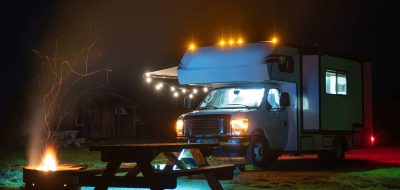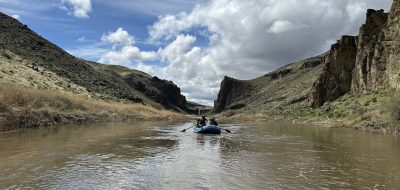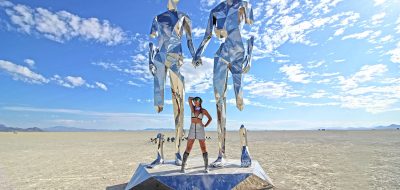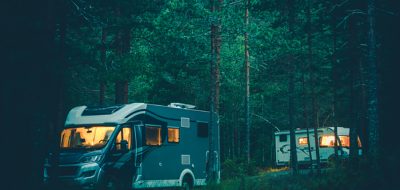By Bob Difley
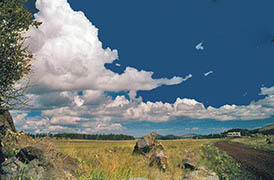 In last week’s post, Where are the hookups? Camping off the grid, I clarified the difference between dry-camping and boondocking. But to be a boondocker, you have to learn dry-camping first–surviving overnight without water, sewage, or electrical hookups.
In last week’s post, Where are the hookups? Camping off the grid, I clarified the difference between dry-camping and boondocking. But to be a boondocker, you have to learn dry-camping first–surviving overnight without water, sewage, or electrical hookups.
The most important feature to understand about your rig, assuming it was built within the last 30 or 40 years, is that it was built to dry-camp. You already have a built-in tank for fresh water, two waste tanks to hold your gray water (shower, sinks) and sewage (toilet), a propane tank and delivery system for heating water (hot water tank), cooking, and running your refrigerator, as well as a house electrical system (house battery/ies in addition to your engine starting battery).
Now what you need to know to dry-camp is how to use these self-contained systems. First: Unplug all hookups currently attached to your rig–water hose, dump hose, electrical cord. Turn on the faucet. Voila! Water! Watch the water drain into–yes—the gray water holding tank. Flip a switch. Light! If you can accomplish all this the next morning, you have successfully dry-camped–even if you are parked in your own driveway
You have discovered that dry-camping is not hard. But–and it is a BIG but–spending one night without appendages does not a boondocker make. The trick is how to line up successive nights dry-camping, without having to press the reset button (i.e. retreat to a campground to recharge, dump, and fill). And that trick takes only three skills: (1) Understanding how your support systems work and their resource capacities, (2) Monitoring your rate of usage of these resources, and (3) A combination of conserving those resources and altering wasteful habits. Your capacities in (1) will be in your owner’s manual. Perfecting (2) and (3) just takes practice.
So, just how do these RV systems enable you to camp without hookups? First, the water from your sinks and shower flow directly into your gray water waste tank, whether you are hooked up with a dump hose or not. The dump hose just empties your tank. So without a dump hose connected, you just leave the dump valve closed until you are ready to dump. Same with the black water waste tank from your toilet. For extended dry-camping or boondocking, knowing your tank capacities and reading the levels determines how many days it will take to fill your tanks. In a coming blog post I will go into the details and tips of how to control and conserve how much water you use and how to extend the fill limit of your waste tanks.
You are unlikely to use all the water in your fresh tank, fill either of your waste water tanks, or drain your propane tank with just a night or two of dry-camping–unless your family likes practicing their operatic arias while taking lengthy hot showers. But you can use up all the electricity in your house battery in one night if you leave your forced air furnace on all night, fall asleep with the TV and all the lights on, or have a series of high octane AC appliances plugged into your inverter sucking up 120-volt amps from your 12-volt battery.
Since electricity can be the most critical limiting factor to extended boondocking, that will be the subject of next Saturday’s post: how to get the most out of your electrical system, how to upgrade, and how to use alternate power sources.
For more RVing articles and tips take a look at my Healthy RV Lifestyle website, where you will also find my ebooks: BOONDOCKING: Finding the Perfect Campsite on America’s Public Lands (PDF or Kindle), 111 Ways to Get the Biggest Bang for your RV Lifestyle Buck (PDF or Kindle), and Snowbird Guide to Boondocking in the Southwestern Deserts (PDF or Kindle), and my newest, The RV Lifestyle: Reflections of Life on the Road (PDF or Kindle reader version). NOTE: Use the Kindle version to read on iPad and iPhone or any device that has the free Kindle reader app.
NOTE: It appears that the “Comment” section of the blog is not currently working and the blog management has so far been unable to fix it. If you would like to comment directly to me you can use my website email address: hrvlcontact at gmail.com (you know how to write it correctly). I would enjoy hearing from you.

